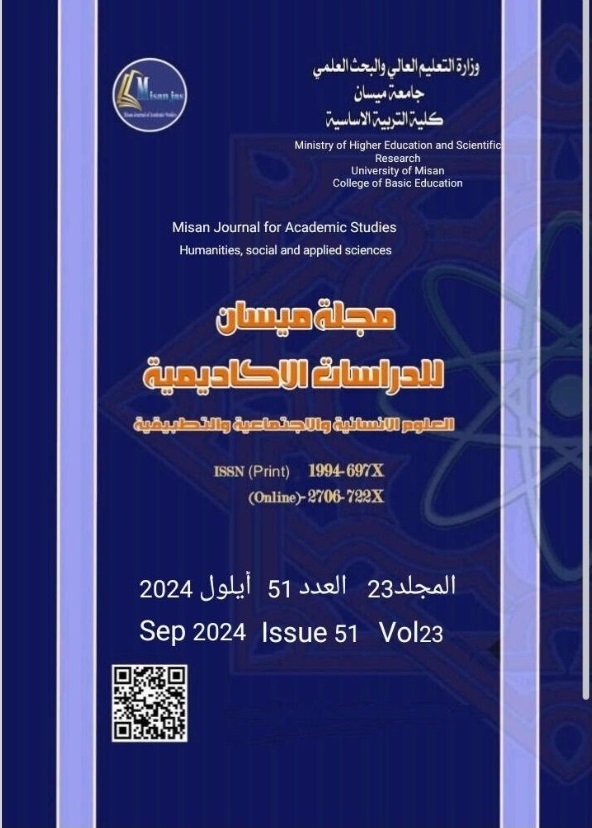Patterns of Multiple Intelligences among High School Students in Misan Governorate According to The (TEEN-MIDAS) Scale and Their Relationship to Achievement
Abstract
The study aims to identify the multiple intelligence patterns among high school students in Misan Governorate according to the (TEEN-MIDAS) scale and their relationship to the achievement. The researcher followed the descriptive survey method and the descriptive correlational method, where the research sample consisted of (200) male and female students from Maysan Governorate. The research sample was selected by a stratified random method. The study tools consisted of the TEEN-MIDAS scale for multiple intelligences. The researcher carried out the necessary statistical processing to confirm the psychometric properties of the study tool and to verify the validity of the hypotheses. The results were as follows:
1- Social intelligence ranked first among middle school students in Maysan Governorate
2-The results showed a high correlation between the multiple intelligence patterns of middle school students in Maysan Governorate according to the variable (gender and achievement)
3- The results also showed that there were differences between students (scientific, literary, industrial, and commercial) in the types of multiple intelligences.
Based on the results of the research, the researcher recommends adopting the multiple intelligence scale (Teen-Midas) in the future to evaluate students who will move from middle school to high school in order to direct them to the specialization that suits their abilities and abilities.
Downloads
Copyright (c) 2024 (Humanities, social and applied sciences) Misan Journal of Academic Studies

This work is licensed under a Creative Commons Attribution-NonCommercial-NoDerivatives 4.0 International License.
The copyright is also the copyright of the magazine only.
All articles published in our magazine are subject to license terms
Creative Commons Attribution(CC BY-NC-ND 4.0) This license permits the content to be reproduced, redistributed and reused in whole or in part for any purpose free of charge, without any permission from the author(s), researcher or student.
Works submitted to Maysan Journal of Academic Studies for publication in the journal (CC BY-NC-ND 4.0) license terms. Where available content can be shared, distributed and replicated provided there is no commercial profit and appropriate credit must be given to the original source through sources or citations. It is mandatory to review any material used from other sources including shapes, tables, and images for re-use under the terms of the Creative Commons License (CC BY-NC-ND 4.0).Provided that there is no modification to the original content



